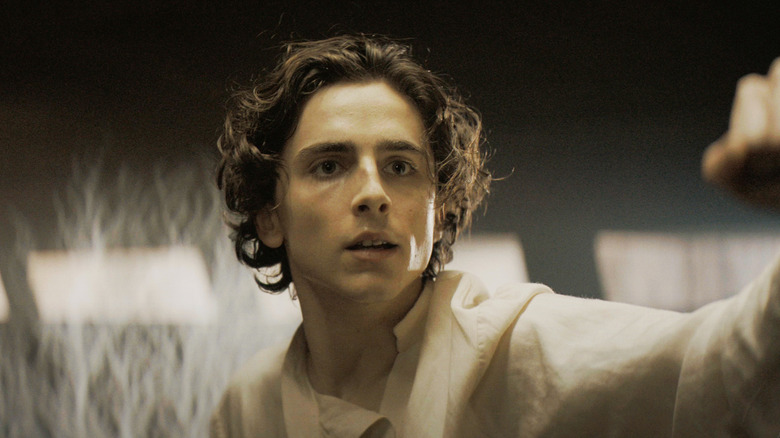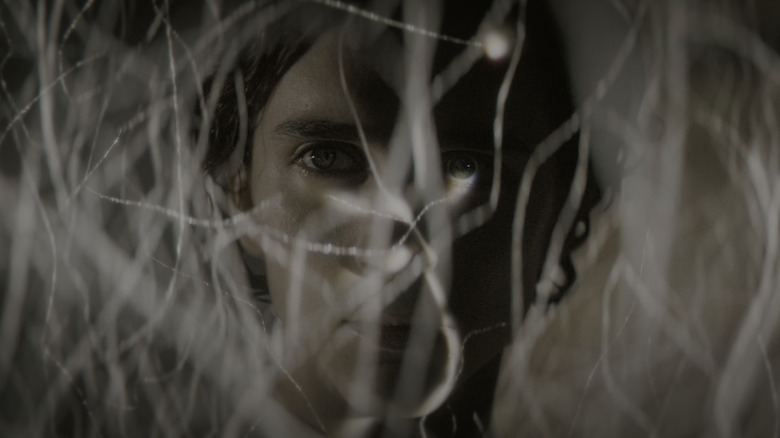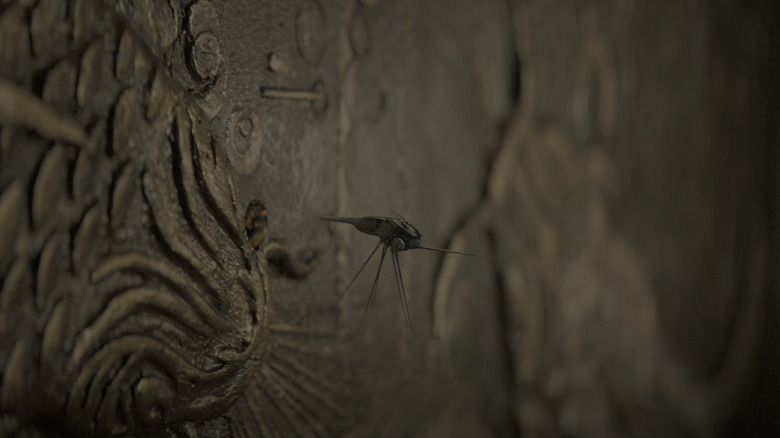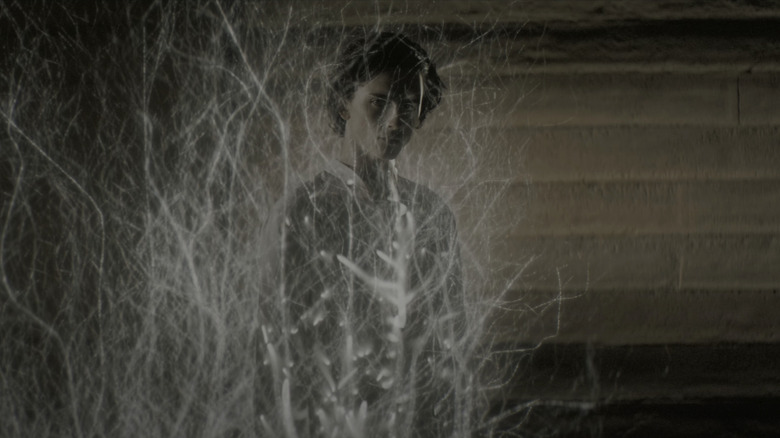Dune's VFX Team Had To Create A Whole New Technique For The Hologram Scenes
Now that "Dune: Part Two" has arrived and passed multiple box office milestones, director Denis Villeneuve can claim to have done the impossible and successfully adapted Frank Herbert's "unfilmable" 1965 novel. 2021's "Dune" and the sequel's critical and commercial triumphs are well-earned, too, with Villeneuve and his team delivering a truly epic sci-fi two-parter that immerses viewers in a world that feels at once alien and believably real.
The Oscar-winning effects in "Dune" and its sequel create an impressive sense of scale, but they're also remarkable for achieving such a feat without making the films feel akin to the blockbuster CGI-fests we're used to in the modern age. Villeneuve, cinematographer Greig Fraser, and production designer Patrice Vermette managed to craft a world that feels visceral and convincing throughout, despite the heavy use of visual effects. Of course, filming on location in the deserts of Jordan and Abu Dhabi helped a lot in that regard, but special effects artist Paul Lambert and his team are just as deserving of praise for integrating the film's visual effects with the immersive world created by Villeneuve and the rest of his crew.
Lambert and the group at Wylie Co. visual effects won an Academy Award for their work on "Dune," so there's no doubt their achievements have been recognized, but it's not until you delve into the techniques used on the film that the sheer dedication and ingenuity of the visual effects artists becomes clear — the Hunter Seeker scene being a great example.
The Hunter Seeker scene in Dune
In Frank Herbert's "Dune" novel, the first attempt on Paul Atreides' life comes when the Duke of House Atreides is alone in his room after he and his family take up residence on the planet Arrakis. In the book, Herbert describes a moment where a Hunter Seeker drone, sent by the nefarious House Harkonnen, enters his room, writing:
"From behind the headboard slipped a tiny hunter-seeker no more than five centimetres long. Paul recognised it at once — a common assassination weapon that every child of royal blood learned about at an early age. It was a ravening sliver of metal guided by some near-by hand and eye. It could burrow into moving flesh and chew its way up nerve channels to the nearest vital organ."
As the scene goes on, Paul has to remain completely still so as to not give away his location to the drone operator, who is seeing the Hunter Seeker's field of view through a "compressed suspensor field" which "distort[s] the vision of its transmitter eye." As Paul holds himself "in near catatonic immobility," the door to his room opens and the Hunter Seeker darts towards it, just as Paul reaches out and snatches it from the air.
Though there are a lot of things wrong with 1984's "Dune," this scene is depicted fairly faithfully in David Lynch's much maligned epic, with Kyle MacLachlan's Paul Atreides having to remain perfectly still while a version of the Hunter Seeker that basically looks like a fancy syringe searches the room. But for Denis Villeneuve's 2021 version, the filmmaker and his crew added an extra level of visual flair to the scene, which called for some VFX ingenuity from Paul Lambert and his own team.
Adding the holographic tree to the Hunter Seeker scene
In "Dune" 2021, instead of simply remaining still during the Hunter Seeker scene, Timothée Chalamet's Paul Atreides steps into a holographic tree to evade detection by the lethal drone. Speaking to Curzon, visual effects supervisor Paul Lambert explained how he and Villeneuve had a preference for superimposing digital effects over the top of existing footage, rather than shooting on blue screen and constructing the world around them. For the Hunter Seek scene, this meant creating the lineaments of the holographic tree ahead of time and projecting them on-set so that Chalamet and the camera operators had something visual to work with. As Lambert explained:
"We shot it first with the Hunter-seeker on a stick and then again without it so that we could add the visual effect. The challenge was in having Paul in the hologram. We actually came up with a whole new technique for that. We projected hundreds of slices of light and tracked his movements interactively. When he moved, a different slice would be projected, which made it feel as if he was going through a branch. Those beautiful projections were such an important aspect of the visual effects. If you keep it all virtual and the DOP can't see what's happening, then each person has got a different idea as to what the final effect would look like."
A quick behind the scenes video further explains how the effect was achieved, revealing that the holographic tree itself was sliced into vertical sections and projected on set, so that whichever branches Chalamet was walking through at the time were the only branches visible on the actor's body. The rest of the translucent tree was added in post-production.
The Hunter Seeker scene was harder than you think
It's worth noting that creating the holographic tree effect wasn't simply a case of projecting slices of the virtual model on-set then adding the full model back in during post. In a separate video, Paul Lambert talks about the process of finishing the scene, saying that it was "actually quite a difficult thing to achieve." What made the effects so time consuming was that once the crew had shot Timothée Chalamet on-set, the team at Wylie had to, as Lambert puts it, "meticulously line up where the tree was in front and behind." Considering the amount of virtual branches on this digital tree, that's a lot of lining up, which is just another testament to the dedication of the entire visual effects team on "Dune" and its sequel. The VFX supervisor went on to explain that the team "did it to a quality level during post-viz that Denis questioned 'Well, what else is there to do?'"
While sets based on Rolex Watches and the sheer scale of the "Dune" movies might be the most obvious and eye-catching elements, the Hunter Seeker scene remains remarkable not only for the complexity of its visual effects, but for the way in which those effects are blended with the footage to create the final shots. That and the fact the scene itself is a masterclass in quiet intensity, offsetting the more spectacular battles and grandiose landscape shots in a way only Denis Villeneueve can handle convincingly.



